
Unidentified Flying Objects
I would like to believe in UFO's. I have watched countless television programs about them, nothing really proving their existence. So called documentaries present a lot of inconclusive photos and movie clips. Most fuzzy and out of focus or look like superimposed images on otherwise common scenes.
There are thousands of web sites devoted to UFO studies, theories, testimonials and photos. Even those who swear they have been abducted by alien beings and later released.
Our universe is still being searched and there millions of unicerses being discovered by scientists using the Hubble and other telescopes. It is hard to imagine that we humans here on earth are the only intelligence in all of the universes. I believe there are other intelligent beings out there somewhere, other than just the human race we know of.
However the mystery has not been solved.
I personally would love to see a flying saucer, UFO or alien space vehicle. So far there is no real scientific proof either way, at least that has been made public. There are many who claim there has always been a government conspiracy to hide the truth. Then there is area 51 in New Mexico where UFO theorists believe Roswell was the site of an alien crash in 1947.
| The following images are interesting, and were gathered from various web sites: |
|---|



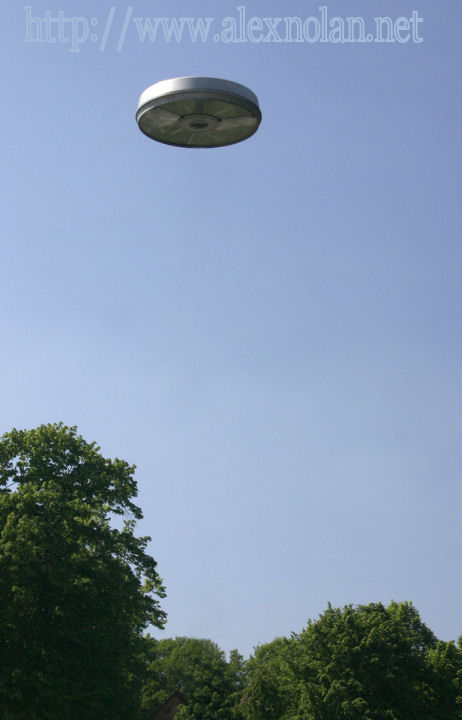












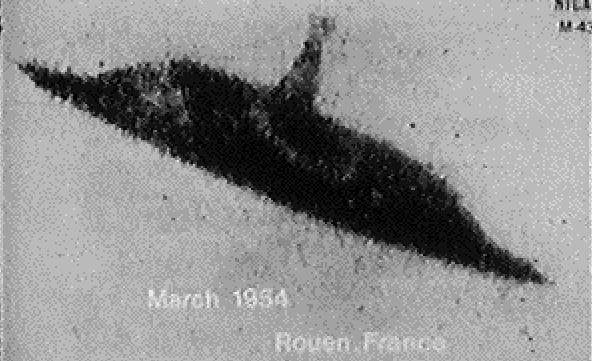
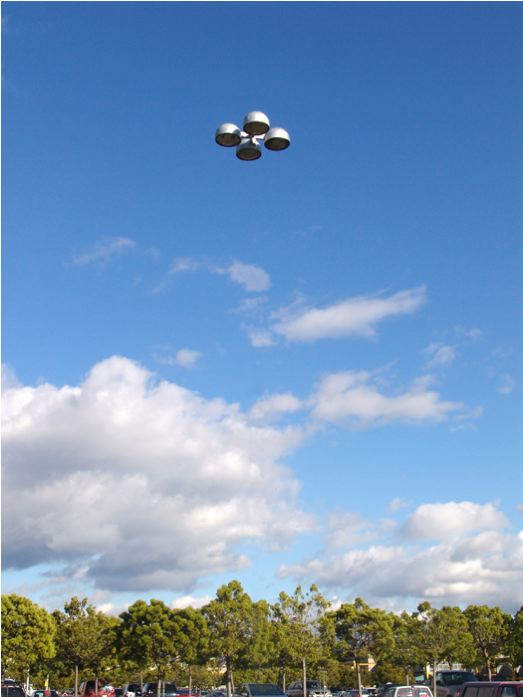

![]()
![]()
![]()
![]()
![]()
![]()
![]()
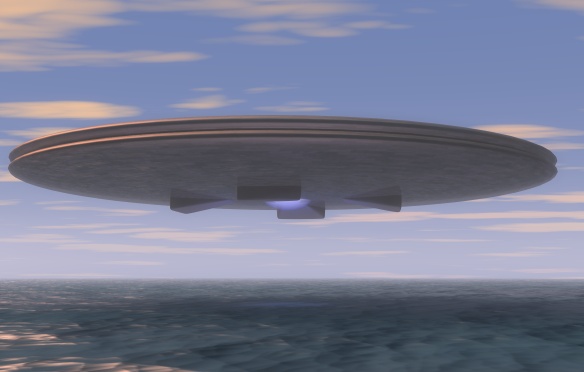


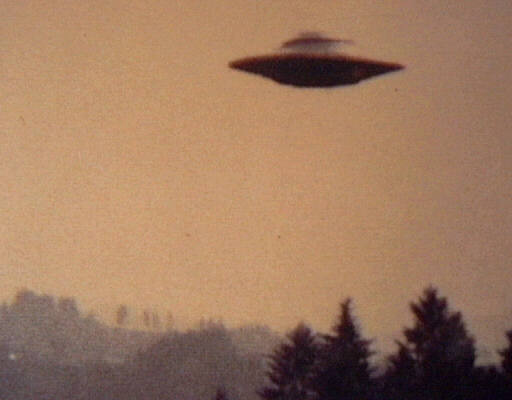



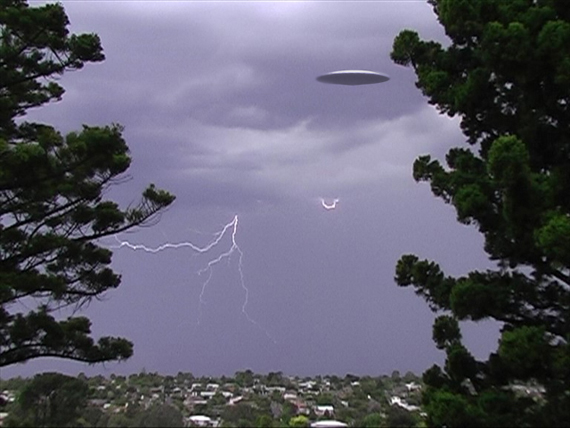

And My Favorite !
|
|
|---|
The following is from Wikipedia, the free encyclopedia:
Unidentified flying object (commonly abbreviated UFO) is a term used to refer to any aerial phenomenon whose cause can not be easily or immediately determined. Both military and civilian research show that a significant majority of UFO sightings are identified after further investigation, either explicitly or indirectly (through the presence of clear and simple explanatory factors: see Occam's Razor.[1] The United States Air Force, who coined the term in 1952, initially defined UFOs as those objects which remain unidentified after scrutiny by expert investigators,[2] though the term UFO is often used more generally to describe any sighting unidentifiable to the reporting observer(s). Popular culture frequently takes the term UFO as a synonym for alien spacecraft. Some investigators now prefer to use the broader term Unidentified Aerial Phenomenon (or UAP), to avoid the confusion and speculative associations that have become attached to UFO.[3]
Studies have established that only a small percentage of reported UFOs are actual hoaxes,[4] while the majority are observations of some real but conventional object - most commonly aircraft, balloons, or astronomical objects such as meteors or bright planets - which have been misidentified by the observer as anomalies. A small percentage of reported sightings (usually 5%-20%) are classified as unidentified flying objects in the strictest sense. (see below for some studies)
The first reports and official investigations of UFOs began during World War II with sightings of so-called foo fighters by Allied airplane crews, and with widespread sightings of European "ghost rockets" in 1946. UFO reports became more common after the first widely publicized US sighting - reported by private pilot Kenneth Arnold in 1947 - which gave rise to the popular terms "flying saucer" and "flying disc". Since then, millions of people believe that they have seen UFOs[5], and tens of thousands of such reports have been catalogued.[6]
Contents[hide] |

Unexplained aerial observations have been reported throughout history. Some were undoubtedly astronomical in nature: comets, bright meteors, one or more of the five planets which can be seen with the naked eye, planetary conjunctions, or atmospheric optical phenomena such as parhelia and lenticular clouds. An example is Halley's Comet, which was recorded first by Chinese astronomers in 240 B.C. and possibly as early as 467 B.C.
Other historical reports seem to defy prosaic explanation, but assessing such accounts is difficult. Whatever their actual cause, such sightings throughout history were often treated as supernatural portents, angels, or other religious omens. Some objects in medieval paintings seem strikingly similar to UFO reports.[7]Art historians explain those objects as religious symbols, often represented in many other paintings of Middle-Age and Renaissance.[8]
Shen Kuo (1031–1095), a Song Chinese government scholar-official and prolific polymath inventor and scholar, wrote a vivid passage in his Dream Pool Essays (1088) about an unidentified flying object. He recorded the testimony of eyewitnesses in 11th century Anhui and Jiangsu (especially in the city of Yangzhou), who stated that a flying object with opening doors would shine a blinding light from its interior (from an object shaped like a pearl) that would cast shadows from trees for ten miles in radius, and was able to take off at tremendous speeds.[9]
Before the terms "flying saucer" were coined in 1947 and "UFO" in 1952, there were a number of reports of unidentified aerial phenomena. These reports date from the mid-nineteenth to early twentieth century. They include:
The post World War II UFO phase in the United States began with a famous sighting by American businessman Kenneth Arnold on June 24, 1947 while flying his private plane near Mount Rainier, Washington. He reported seeing nine brilliantly bright objects flying across the face of Rainier.

Although there were other 1947 U.S. sightings of similar objects that preceded this, it was Arnold's sighting that first received significant media attention and captured the public's imagination. Arnold described what he saw as being "flat like a pie pan", "shaped like saucers and were so thin I could barely see them...", "half-moon shaped, oval in front and convex in the rear. ...they looked like a big flat disk" (see Arnold's drawing at right), and flew "like a saucer would if you skipped it across the water". (One of the objects, however, he would describe later as being almost crescent-shaped, as shown in illustration at left.) Arnold’s descriptions were widely reported and within a few days gave rise to the terms flying saucer and flying disk.[14] Arnold’s sighting was followed in the next few weeks by hundreds of other reported sightings, mostly in the U.S., but in other countries as well.
After reports of the Arnold sighting hit the media, other cases began to be reported in increasing numbers. In one instance a United Airlines crew sighting of nine more disc-like objects over Idaho on the evening of July 4. At the time, this sighting was even more widely reported than Arnold’s and lent considerable credence to Arnold’s report.
American UFO researcher Ted Bloecher, in his comprehensive review of newspaper reports (including cases that preceded Arnold's), found a sudden surge upwards in sightings on July 4, peaking on July 6–8. Bloecher noted that for the next few days most American newspapers were filled with front-page stories of the new "flying saucers" or "flying discs". Reports began to rapidly tail off after July 8 [15], when officials began issuing press statements on the Roswell UFO incident, in which they explained the debris as being that of a weather balloon. [16]
Over several years in the 1960s, Bloecher (aided by physicist James E. McDonald) discovered 853 flying disc sightings that year from 140 newspapers from Canada, Washington D.C, and every U.S. state except Montana. [17]
UFOs have been subject to various investigations over the years, varying widely in scope and scientific rigor. Governments or independent academics in the United States, Canada, the United Kingdom, France, Belgium, Sweden, Brazil, Chile, Mexico, Spain, and the Soviet Union are known to have investigated UFO reports at various times. Among the best known government studies are Project Blue Book, previously Project Sign and Project Grudge, conducted by the United States Air Force from 1947 until 1969, the secret U.S. Army/Air Force Project Twinkle investigation into green fireballs (1948–1951), and Brazilian Air Force Operation Saucer (1977). A public research effort conducted by the Condon Committee for the USAF, which arrived at a negative conclusion in 1968, marked the end of the US government's official investigation of UFOs, though documents indicate various government intelligence agencies continue to unofficially investigate or monitor the situation. [18]
No public government investigation has ever openly declared UFOs to be real, unexplained objects or of concern to national defense. (However, see below for some internal, secret studies that have concluded otherwise.) Some private studies have been neutral in their conclusions, but argued the inexplicable core cases called for continued scientific study. Examples are the Sturrock Panel study of 1998 and the 1970 AIAA review of the Condon Report.
Following the large U.S. surge in sightings in June and early July 1947, on July 9, 1947, Army Air Force (AAF) intelligence, in cooperation with the FBI, began a formal investigation into selected best sightings with characteristics that could not be immediately rationalized, which included Kenneth Arnold’s and the United Airlines crew’s. The AAF used "all of its scientists" to determine whether or not "such a phenomenon could, in fact, occur". The research was "being conducted with the thought that the flying objects might be a celestial phenomenon," or that "they might be a foreign body mechanically devised and controlled."[19] Three weeks later in a preliminary defense estimate, the air force investigation decided that, "This ‘flying saucer’ situation is not all imaginary or seeing too much in some natural phenomenon. Something is really flying around."[20]
A further review by the intelligence and technical divisions of the Air Materiel Command at Wright Field reached the same conclusion, that "the phenomenon is something real and not visionary or fictitious," that there were objects in the shape of a disc, metallic in appearance, and as big as man-made aircraft. They were characterized by "extreme rates of climb [and] maneuverability," general lack of noise, absence of trail, occasional formation flying, and "evasive" behavior "when sighted or contacted by friendly aircraft and radar," suggesting a controlled craft. It was thus recommended in late September 1947 that an official Air Force investigation be set up to investigate the phenomenon. It was also recommended that other government agencies should assist in the investigation. [21]
This led to the creation of the Air Force’s Project Sign at the end of 1947, one of the earliest government studies to come to a secret extraterrestrial conclusion. In August 1948, Sign investigators wrote a top-secret intelligence estimate to that effect. The Air Force Chief of Staff Hoyt Vandenberg ordered it destroyed. The existence of this suppressed report was revealed by several insiders who had read it, such as astronomer and USAF consultant Dr. J. Allen Hynek and Capt. Edward J. Ruppelt, the first head of the USAF's Project Blue Book. [22]
Project Sign was dismantled and became Project Grudge at the end of 1948. Angered by the low quality of investigations by Grudge, the Air Force Director of Intelligence reorganized it as Project Blue Book in late 1951, placing Ruppelt in charge. Blue Book closed down in 1970, ending the official Air Force UFO investigations. However, a 1969 USAF document, known as the Bolender memo, plus later government documents revealed that nonpublic U.S. government UFO investigations continued after 1970. The Bollender memo first stated that "reports of unidentified flying objects which could affect national security... are not part of the Blue Book system," indicating that more serious UFO incidents were already handled outside of the public Blue Book investigation. The memo then added, "reports of UFOs which could affect national security would continue to be handled through the standard Air Force procedures designed for this purpose."
Use of UFO instead of the popular flying saucer was first suggested in 1952 by Ruppelt, who felt that flying saucer did not reflect the diversity of the sightings. Ruppelt suggested that UFO should be pronounced as a word — you-foe. However it is generally pronounced by forming each letter: U.F.O. His term was quickly adopted by the Air Force, which also briefly used "UFOB" circa 1954, for Unidentified Flying Object. Ruppelt recounted his experiences with Project Blue Book in his memoir, The Report on Unidentified Flying Objects (1956), also the first book to use the term.[23]
Air Force Regulation 200-2,[24] issued in 1953 and 1954, defined an Unidentified Flying Object ("UFOB") as "any airborne object which by performance, aerodynamic characteristics, or unusual features, does not conform to any presently known aircraft or missile type, or which cannot be positively identified as a familiar object." The regulation also said UFOBs were to be investigated as a "possible threat to the security of the United States" and "to determine technical aspects involved." As with any then-ongoing investigation, Air Force personnel did not discuss the investigation with the press.[25][26]
Well known American investigations include:
Another early U.S. Army study, established sometime in the 1940s and of which little is known, was called the Interplanetary Phenomenon Unit (IPU). In 1987, British UFO researcher Timothy Good received a letter confirming the existence of the IPU from the Army Director of Counter-intelligence, in which it was stated, "...the aforementioned Army unit was disestablished during the late 1950s and never reactivated. All records pertaining to this unit were surrendered to the U.S. Air Force Office of Special Investigations in conjunction with operation BLUEBOOK." The IPU records have never been released.[27]
Thousands of documents released under FOIA also indicate that many U.S. intelligence agencies collected (and still collect) information on UFOs, including the Defense Intelligence Agency (DIA), FBI, CIA, National Security Agency (NSA), as well as military intelligence agencies of the Army and Navy, in addition to the Air Force. [28]
The investigation of UFOs has also attracted many civilians, who in the U.S formed research groups such as National Investigations Committee On Aerial Phenomena (NICAP, active 1956-1980), Aerial Phenomena Research Organization (APRO, 1952-1988), Mutual UFO Network (MUFON, 1969-), and Center for UFO Studies (CUFOS, 1973-).

In Canada, the Department of National Defence has dealt with reports, sightings and investigations of UFOs across Canada. In addition to conducting investigations into crop circles in Duhamel, Alberta, it still identifies the Falcon Lake incident in Manitoba and the Shag Harbour incident in Nova Scotia as "unsolved".[29]
The Canadian studies include Project Magnet (1950–1954) and Project Second Story (1952–1954)
| Wikinews has related news: |
In March 2007, the French Centre National d'Études Spatiales (CNES) published an archive of UFO sightings and other phenomena online.[30]
French studies include GEPAN/SEPRA/GEIPAN (1977–), within the French space agency CNES, the longest ongoing government-sponsored investigation, and the private French COMETA panel (1996–1999)
The UK conducted various investigations into UFO sightings and related stories. The contents of some of these investigations have since been released to the public.
Eight file collections on UFO sightings, dating from 1978 to 1987, were first released on May 14, 2008, to the UK National Archives by the Ministry of Defence.[31] Although kept secret from the public for many years, most of the files have low levels of classification and none is classified Top Secret. 200 files are set to be made public by 2012. The files are correspondence from the public sent to government officials, such as the MoD and Margaret Thatcher. The MoD released the files under the Freedom of Information Act due to requests from researchers. [32] These files include, but are not limited to, UFOs over Liverpool and the Waterloo Bridge in London.[33]
On October 20, 2008 more UFO files were released. One case released detailed that in 1991 an Alitalia passenger aircraft was approaching Heathrow Airport when the pilots saw what they described as a "cruise missile" flew extremely close to the cockpit. The pilots believed that a collision was imminent. UFO expert Dr David Clarke says that this is one of the most convincing cases for a UFO he has come across. [34]
British investigations include The UK's Flying Saucer Working Party. Its final report, published in 1951, remained secret for over 50 years. The Working Party concluded that all UFO sightings could be explained as misidentifications of ordinary objects or phenomena, optical illusions, psychological delusions or hoaxes. The report stated: ‘We accordingly recommend very strongly that no further investigation of reported mysterious aerial phenomena be undertaken, unless and until some material evidence becomes available’.
A secret study of UFOs undertaken for the UK’s Ministry of Defence (MoD) between 1996 and 2000 and was publicly released in 2006. The report is titled "Unidentified Aerial Phenomena in the UK Defence Region" and was code-named Project Condign. The report confirmed earlier findings that the main causes of UFO sightings are misidentification of man-made and natural objects. The report noted: "No artefacts of unknown or unexplained origin have been reported or handed to the UK authorities, despite thousands of UAP reports. There are no SIGINT, ELINT or radiation measurements and little useful video or still IMINT." It concluded: "There is no evidence that any UAP, seen in the UKADR [UK Air Defence Region], are incursions by air-objects of any intelligent (extraterrestrial or foreign) origin, or that they represent any hostile intent."
In contrast, Nick Pope, who headed the MoD UFO desk from 1991-1994, states that while about 80% of the cases he investigated were misidentifications of known objects and phenomena (while 15% of sightings had insufficient information), about 5% "seemed to defy any conventional explanation." These included cases with multiple and/or highly trained witnesses such as pilots or military personnel, corroboration from radar or video/photography, and involved apparent structured craft with speeds and maneuverability beyond that of human origin.[35] Stopping short of an extraterrestrial explanation (though not discounting it), Pope believes the UFO phenomenon is quite real and raises serious defense, national security, and air safety issues. Pope describes many of the perplexing cases, such as the Rendlesham Forest incident, and the politics surrounding UFOs in his book Open Skies, Closed Minds.
The Air Force's Project Blue Book files indicate that approximately 1%[36] of all unknown reports came from amateur and professional astronomers or other users of telescopes (such as missile trackers or surveyors). In the 1970s, astrophysicist Peter A. Sturrock conducted two surveys of the American Institute of Aeronautics and Astronautics and American Astronomical Society. About 5% of the members polled indicated that they had had UFO sightings. In 1980, a survey of 1800 members of various amateur astronomer associations by Gert Helb and astronomer J. Allen Hynek of the Center for UFO Studies (CUFOS) found that 24% responded "yes" to the question "Have you ever observed an object which resisted your most exhaustive efforts at identification?"
Astronomer Clyde Tombaugh, who admitted to six UFO sightings, including three green fireballs supported the Extraterrestrial hypothesis (ETH) for UFOs and stated he thought scientists who dismissed it without study were being "unscientific." Another astronomer was Dr. Lincoln LaPaz, who had headed the Air Force's investigation into the green fireballs and other UFO phenomena in New Mexico. LaPaz reported two personal sightings, one of a green fireball, the other of an anomalous disc-like object. Even later UFO debunker Dr. Donald Menzel filed a UFO report in 1949.

Studies show that after careful investigation, the majority of UFOs can be identified as ordinary objects or phenomena (see Identification studies of UFOs). The most commonly found identified sources of UFO reports are:
Much less common sources of UFO reports include:
A study by the Battelle Memorial Institute of US Air Force reports included these categories as well as a "psychological" one. However, the scientific analysts were unable to come up with prosaic explanations for 21.5% of the 3200 cases they examined and 33% of what were considered the best cases remained unexplained, double the number of the worst cases. (See full statistical breakdown in Identification studies of UFOs). Of the 69% identifieds, 38% were deemed definitely explained while 31% were thought to be "questionable." About 9% of the cases were considered to have insufficient information to make a determination.
The official French government UFO investigation (GEPAN/SEPRA), run within the French space agency CNES between 1977 and 2004, scientifically investigated about 6000 cases and found that 13.5% defied any rational explanation, 46% were deemed definitely or likely identifiable, while 41% lacked sufficient information for classification.
An individual 1979 study by CUFOS researcher Allan Hendry found, as did other investigations, that only a small percentage of cases he investigated were hoaxes (<1%) and that most sightings were actually honest misidentifications of prosaic phenomena. Hendry attributed most of these to inexperience or misperception.[38] However, Hendry's figure for unidentified cases was considerably lower than many other UFO studies such as Project Blue Book or the Condon Report which have found rates of unidentified cases ranging from 6% to 30%. Hendry found that 88.6% of the cases he studied had a clear prosaic explanation, and he discarded a further 2.8% due to unreliable or contradictory witnesses or insufficient information. The remaining 8.6% of reports could not definitively be explained by prosaic phenomena, although he felt that a further 7.1% could possibly be explained, leaving only the very best 1.5% without plausible explanation.
| The inclusion or exclusion of items from this list, or length of this list, is disputed. Please discuss this issue on the talk page. |
To account for unsolved UFO cases, several hypotheses have been proposed.
Other private or governmental studies, some secret, have concluded in favor of the Extraterrestrial hypothesis (ETH), or have had members who disagreed with official conclusions against the conclusion by committees and agencies to which they belonged. The following are examples of sources that have focused specifically on the topic:
Besides visual sightings, reports sometimes include claims of indirect and direct physical evidence, including cases studied by the military and various government agencies of different countries.
These various reported physical evidence cases have been studied by various scientist and engineers, both privately and in official governmental studies (such as Project Blue Book, the Condon Committee, and the French GEPAN/SEPRA). A comprehensive scientific review of physical evidence cases was carried out by the 1998 Sturrock UFO panel.
Ufology is a neologism describing the collective efforts of those who study UFO reports and associated evidence.
Attempts have been made to reverse engineer the possible physics behind UFOs through analysis of both eyewitness reports and the physical evidence, on the assumption that they are powered vehicles. Examples are former NASA and nuclear engineer James McCampbell in his book Ufology,[59] NACA/NASA engineer Paul R. Hill in his book Unconventional Flying Objects, and German rocketry pioneer Hermann Oberth. Among subjects tackled by McCampbell, Hill, and Oberth was the question of how UFOs can fly at supersonic speeds without creating a sonic boom. McCampbell's proposed solution of a microwave plasma parting the air in front of the craft is currently being researched by Dr. Leik Myrabo, Professor of Engineering Physics at the Rensselaer Polytechnic Institute as a possible advance in hypersonic flight.[60] In contrast, Hill and Oberth believed UFOs utilize an as yet unknown anti-gravity field to accomplish the same thing as well as provide propulsion and protection of occupants from the effects of high acceleration.
Some researchers recommend that observations be classified according to the features of the phenomenon or object that are reported or recorded. Typical categories include:
Popular UFO classification systems include the Hynek system, created by J. Allen Hynek, and the Vallée system, created by Jacques Vallée.
Hynek's system involves dividing the sighted object by appearance, subdivided further into the type of "close encounter" (a term from which the film director Steven Spielberg derived the title of his UFO movie, "Close Encounters of the Third Kind").
Jacques Vallée's system classifies UFOs into five broad types, each with from three to five subtypes that vary according to type.
UFOs are sometimes an element of elaborate conspiracy theories in which governments are said to be intentionally covering up the existence of aliens, or sometimes collaborating with them. There are many versions of this story; some are exclusive, while others overlap with various other conspiracy theories.
In the U.S., opinion polls again indicate that a strong majority of people believe the U.S. government is withholding such information.[61][62] Various notables have also expressed such views. Some examples are astronauts Gordon Cooper and Edgar Mitchell, Senator Barry Goldwater, Vice Admiral Roscoe H. Hillenkoetter (the first CIA director), Lord Hill-Norton (former British Chief of Defense Staff and NATO head), the 1999 high-level French COMETA report by various French generals and aerospace experts, and Yves Sillard (former director of the French space agency CNES, new director of French UFO research organization GEIPAN).[63]
There is also speculation that UFO phenomena are tests of experimental aircraft or advanced weapons.[citation needed] In this case UFOs are viewed as failures to retain secrecy, or deliberate attempts at misinformation: to deride the phenomenon so that it can be pursued unhindered. This explanation may or may not feed back into the previous one, where current advanced military technology is considered to be adapted alien technology (see also: skunk works and Area 51).[citation needed]
It has also been suggested by a few paranormal authors that all or most human technology and culture is based on extraterrestrial contact. See also ancient astronauts.
Some also contend regarding physical evidence that it exists abundantly but is swiftly and sometimes clumsily suppressed by governments, aiming to insulate a population they regard as unprepared for the social, theological, and security implications of such evidence. See the Brookings Report.
There have been allegations of suppression of UFO related evidence for many decades. There are also conspiracy theories which claim that physical evidence might have been removed and/or destroyed/suppressed by some governments. (See also Men in Black) Some examples are:
Not all Ufologists who have studied some these cases agree they are hoaxes. One notable example, Naval optical physicist Dr. Bruce Maccabee extensively investigated the Ed Walters Gulf Breeze case, analyzed the various photos and videos, and deemed them authentic. In fact, some of the details would have required extensive expertise to fake. [77] Maccabee also noted there were many independent witnesses to some of the Gulf Breeze sightings besides Walters, including Maccabee himself. [78]
UFOs constitute a widespread international cultural phenomenon of the last half-century. Gallup polls rank UFOs near the top of lists for subjects of widespread recognition. In 1973, a survey found that 95 percent of the public reported having heard of UFOs, whereas only 92 percent had heard of US President Gerald Ford in a 1977 poll taken just nine months after he left the White House. (Bullard, 141) A 1996 Gallup poll reported that 71 percent of the United States population believed that the government was covering up information regarding UFOs. A 2002 Roper poll for the Sci Fi channel found similar results, but with more people believing UFOs were extraterrestrial craft. In that latest poll, 56 percent thought UFOs were real craft and 48 percent that aliens had visited the Earth. Again, about 70 percent felt the government was not sharing everything it knew about UFOs or extraterrestrial life.[79][80][81] Another effect of the flying saucer type of UFO sightings has been Earth-made flying saucer craft in space fiction, for example the Earth-made craft Starship C-57D in Forbidden Planet, and the saucer part of the USS Enterprise in Star Trek And many others. For an excellent analysis of the interrelationship between popular culture and UFOs consult the research by psychologist Armando Simon, especially his contribution in Richard Haines' book, UFO Phenomena and the Behavioral Scientist.